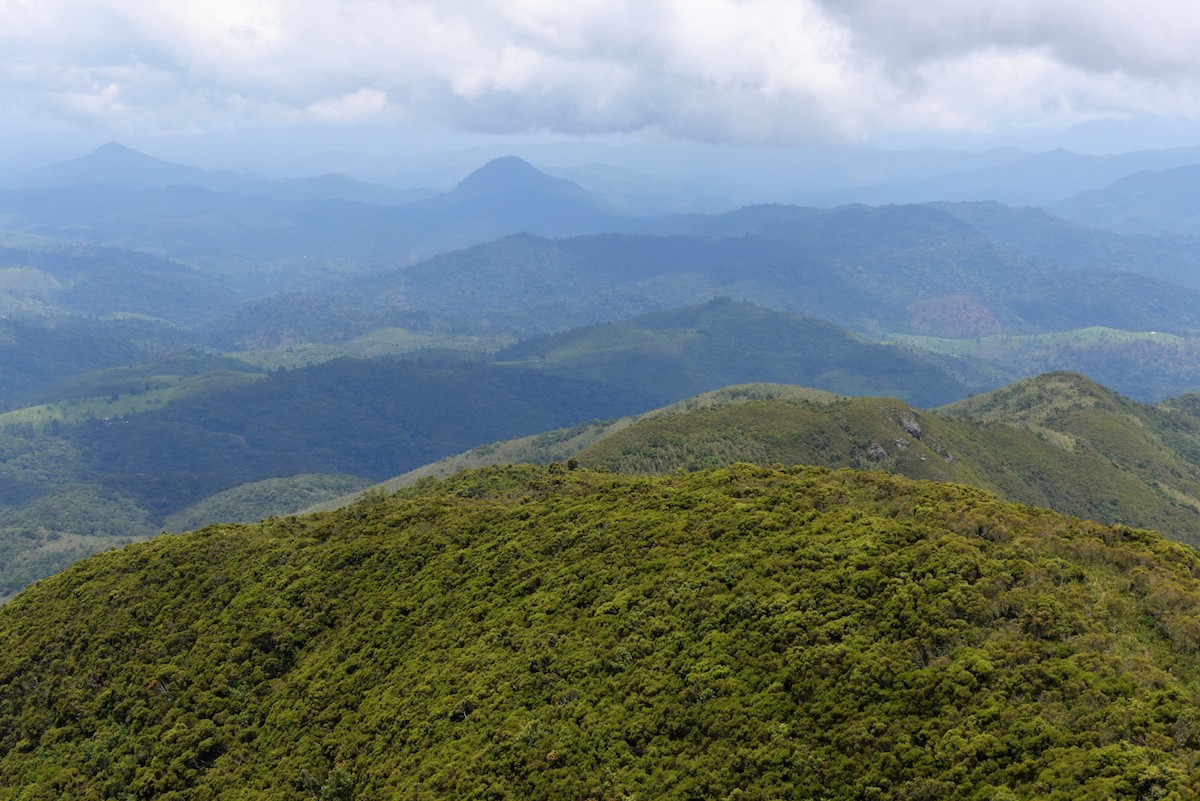- East Africa’s Albertine Rift region hosts many animal and plant species that evolved in isolation and are endemic – meaning they’re found nowhere else in the world.
- But a recent study estimates nearly half of the Albertine Rift’s endemic species may become threatened with extinction by 2080 as climate change shrinks their habitat.
- The study also finds certain species have already lost as much as 90 percent of their habitat to agriculture.
- The researchers say that their findings could be used to predict how the ranges of wildlife populations will shift in response to a changing climate so that conservation workers can focus their efforts on the areas most likely to retain important habitat.
East Africa’s Albertine Rift extends nearly a thousand miles from the border between northwestern Uganda and northeastern DRC down through Rwanda and Burundi to Malawi. Dotted with mountains and pockmarked with lakes, the region is considered one of the most biodiverse places on the continent and is home to many animal and plant species that evolved in isolation and are endemic – meaning they’re found nowhere else in the world.
But agriculture and climate change are putting many of these species at risk, according to a study published recently in Biological Conservation. Its findings indicate nearly half of the Albertine Rift’s endemic species may become threatened with extinction by 2080 if current climatic trends continue.

The study was conducted by researchers with institutions in the U.S. and UK who synthesized data on 162 plant and animal species found only in the Albertine Rift region. They used computer modeling to figure out how much habitat has so far been lost to agriculture and estimate how much may be lost in the future due to climate change.
They found that, on average, 38 percent of these species’ habitats have been lost to land conversion for agriculture. Some species have lost as much as 90 percent of their habitat, the researchers write in their study.
And climate change stands to make things even worse for most of these species, they say. The study predicts that 75 percent of all suitable Albertine Rift habitat that currently remains will be gone by 2080. That number goes up to 90 percent for 34 endemic species.
Overall, of the 162 species the researchers assessed, they estimate 46 percent of them will qualify for threatened status according to International Union for Conservation of Nature (IUCN) standards.


A big part of the reason behind this expected decline that many of these species live in forests at or near the tops of mountains, which act as humid oases in a sea of relative aridity. As the regional climate warms and dries, scientists expect these forests will shrink as heat-adapted lowland vegetation increasingly replaces montane forests that require cooler, moister conditions.
“Much of the Albertine Rift is mountainous terrain, and the species that inhabit these places have narrow ranges,” said Andrew Plumptre, a scientist at Wildlife Conservation Society (WCS) and one of the authors of the study. “This makes many species especially vulnerable to climate change.”
One positive note revealed by the study is that a large portion – 68 percent – of remaining habitat in the region will be located in protected areas that have already been established. These include the recently created and little-explored Kabobo Natural Reserve and Itombwe Nature Reserve, both in the Democratic Republic of Congo.

The researchers say that their findings could be used to predict how the ranges of wildlife populations will shift in response to a changing climate so that conservation workers can focus their efforts on the areas most likely to retain important habitat.
“We hope that this study and similar ones will help wildlife managers and government agencies to anticipate where conservation measures to protect the region’s unique primates, such as the mountain and Grauer’s gorillas, birds, reptiles, and other unique species will be most effective,” said lead author Sam Ayebare of WCS Uganda.
Citation:
Ayebare, S., Plumptre, A. J., Kujirakwinja, D., & Segan, D. (2018). Conservation of the endemic species of the Albertine Rift under future climate change. Biological Conservation, 220, 67-75.
Banner image of a mountain gorilla by A.J. Plumptre/WCS
FEEDBACK: Use this form to send a message to the editor of this post. If you want to post a public comment, you can do that at the bottom of the page.
